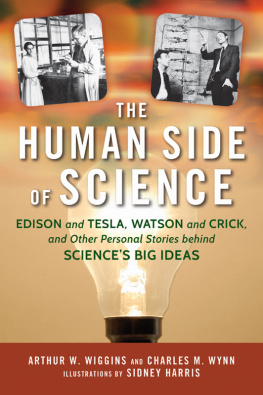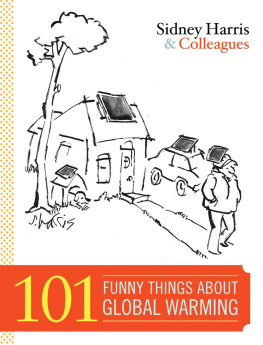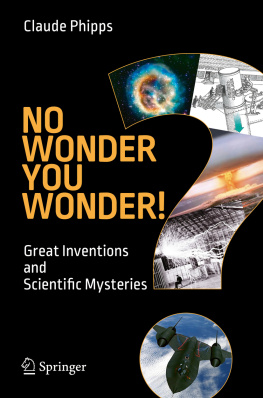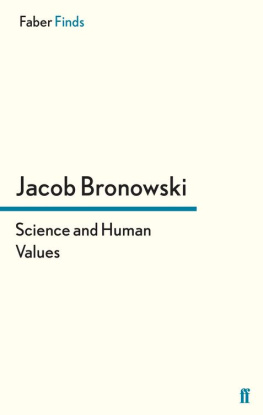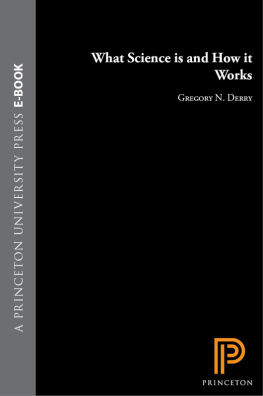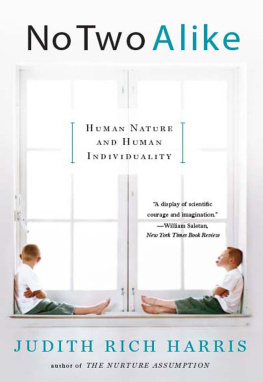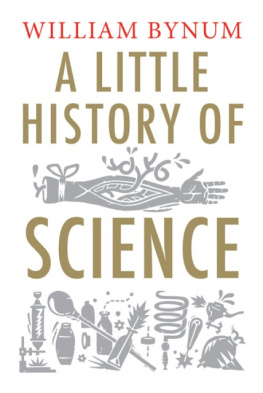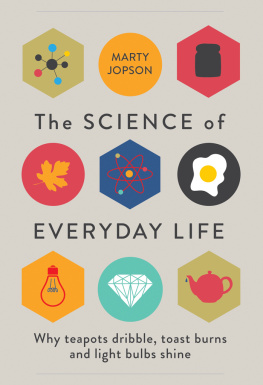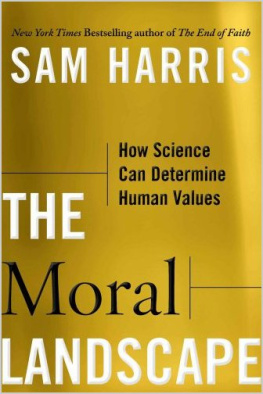ALSO BY ARTHUR W. WIGGINS
The Joy of Physics


Used with permission from Sidney Harris.
After you've lived in a house for a while, you develop a vivid mental picture of where you live. But a curious thing happens if you sit on a neighbor's patio and look back at your house. This new perspective allows you to see your house a bit differently, and your mental image of it gets revised.
So it is with this book. As we authors viewed science from the standpoint of the humanity of its participants, our mental picture of how scientific ideas evolve has changed markedly. In this book, we have chronicled almost four hundred people's interactions over twenty-five hundred years and in dozens of countries of the world. Influenced by person-to-person interactions, these people produced big ideas of science. These interactions were often cooperative, sometimes contentious, and frequently connected, reinforcing the idea of us living on a small world. Thanks to the refining power of the scientific method, only those ideas that continued to be supported by physical evidence survived the evaluation process and became truly big ideas.

Used with permission from Sidney Harris.
As to the unsolved problems science faces today: dark energy, dark matter, DNA details, the Theory of EverythingThe more things change, the more they stay the same. The next group of Newtons, Einsteins, Teslas, and Hubbles have different challenges, but they, too, will be influenced by human interactions that will continue to be cooperative, contentious, and connected.
How could we expect it to be any different?

If you want to find out more about the people or ideas discussed here, consider the following sources:
GENERAL
Asimov, Isaac. Asimov's Chronology of Science and Discovery. New York: Harper & Row, 1989.
Ball, Philip. Curiosity: How Science Became Interested in Everything. Chicago and London: University of Chicago Press, 2012.
Bauer, Susan Wise. The Story of Science. New York: W. W. Norton, 2015.
Gribbin, John. The Scientists: A History of Science Told through the Lives of Its Greatest Inventors. New York: Random House, 2002.
Hellman, Hal. Great Feuds in Science: Ten of the Liveliest Disputes Ever. New York: John Wiley & Sons, 1998.
Levy, Joel. Scientific Feuds: From Galileo to the Human Genome Project. London: New Holland, 2010.
Livio, Mario. Brilliant Blunders. New York: Simon & Schuster, 2013.
Myers, Morton A. Prize Fight: The Race and the Rivalry to be the First in Science. New York: Palgrave Macmillan, 2012.
Robinson, Matthew, ed. The Scientists: An Epic of Discovery. New York: Thames and Hudson, 2012.
Simmons, John. The Scientific 100: A Ranking of the Most Influential Scientists, Past and Present. Secaucus, NJ: Citadel, 1996.
INTRODUCTION
Scientific Method. Wikipedia, s.v. Last modified December 6, 2015. http://en.wikipedia.org/wiki/Scientific_method.
Understanding and Using the Scientific Method. Science Made Simple. Accessed May 2015. http://www.sciencemadesimple.com/scientific_method.html.
Wynn Sr., Charles M., and Arthur W. Wiggins. The Five Biggest Ideas in Science. New York: Wiley, 1997.
CHAPTER 1: DEMOCRITUS AND ARISTOTLE PONDER THE EXISTENCE OF ATOMS
Aristotle. Wikipedia, s.v. Last modified January 4, 2016. http://en.wikipedia.org/wiki/Aristotle.
Aristotle (384322 BCE). In Internet Encyclopedia of Philosophy. Accessed May 2015. http://www.iep.utm.edu/aristotl/.
Berryman, Sylvia. Democritus. In Stanford Encyclopedia of Philosophy, edited by Edward N. Zalta, 2010. Accessed May 2015. http://plato.stanford.edu/entries/democritus/.
Democritus. European Graduate School. Accessed May 2015. http://www.egs.edu/library/democritus/biography/.
Democritus. Wikipedia, s.v. Last modified December 2, 2015. http://en.wikipedia.org/wiki/Democritus.
Shields, Christopher. Aristotle. In The Stanford Encyclopedia of Philosophy, edited by Edward N. Zalta, 2010. Accessed May 2015. http://plato.stanford.edu/archives/fall2015/entries/aristotle.
Wynn Sr., Charles M., and Arthur W. Wiggins. The Five Biggest Ideas in Science. New York: Wiley, 1997.
Bonus video interview: Atoms with Democritus and Aristotle. Vimeo video, 18:01. Posted on June 2015 by Bloomfield Township. Accessed January 4, 2016. http://vimeo.com/125063018.
CHAPTER 2: ARISTOTLE, ARISTARCHUS, COPERNICUS, AND GALILEO SEEK TO DETERMINE EARTH'S PLACE IN THE COSMOS
Gannon, Megan. Tycho Brahe Died from Pee, Not Poison. Live Science, November 6, 2012. Accessed May 2015. http://www.livescience.com/24835-astronomer-tycho-brahe-death.html.
Ptolemy. Wikipedia, s.v. Last modified January 5, 2016. http://en.wikipedia.org/wiki/Ptolemy.
Rubenstein. Richard E. Aristotle's Children: How Christians, Muslims, and Jews Rediscovered Ancient Wisdom and Illuminated the Dark Ages. New York: Harcourt, 2004.
Wiggins, Arthur W., and Charles M. Wynn Sr. The Five Biggest Unsolved Problems in Science. New York: Wiley, 2003.
Bonus Video Interview: The Solar System with Tycho Brahe and Galileo Galilei. Vimeo video, 14:45. Posted on July 2015 by Bloomfield Township. http://vimeo.com/129116467.
CHAPTER 3: ISAAC NEWTON, ROBERT HOOKE, AND GOTTFRIED LEIBNIZ ARGUE ABOUT MOTION AND CALCULUS
Clark, David H., and Stephen P. H. Clark. Newton's Tyranny: The Suppressed Scientific Discoveries of Stephen Gray and John Flamsteed. New York: W. H. Freeman, 2001.
Edmond Halley. Wikipedia, s.v. Last modified January 5, 2016. http://en.wikipedia.org/wiki/Edmond_Halley.
Gottfried Wilhelm Leibniz. Wikipedia, s.v. Last modified January 4, 2016. http://en.wikipedia.org/wiki/Gottfried_Wilhelm_Leibniz.
Isaac Newton. Wikipedia, s.v. Last modified January 4, 2016. http://en.wikipedia.org/wiki/Isaac_Newton.
Nicolas Fatio de Duillier. Wikipedia, s.v. Last modified June 1, 2015. http://en.wikipedia.org/wiki/Nicolas_Fatio_de_Duillier.
McNab, Andrew. On the Shoulders of Giants. IsaacNewton.org.uk. Accessed September 2015. http://www.isaacnewton.org.uk/essays/Giants.
Robert Hooke. Wikipedia, s.v. Last modified November 16, 2015. http://en.wikipedia.org/wiki/Robert_Hooke.
Wiggins, Arthur W. The Joy of Physics. Amherst, NY: Prometheus Books, 2007; 2nd ed., 2011.
Bonus Video Interview: Newton and Hooke on Gravity. Vimeo video, 14:47. Posted on July 2015 by Bloomfield Township. http://vimeo.com/130318251.
CHAPTER 4: THE BATTLING BERNOULLIS AND BERNOULLI'S PRINCIPLE
Bui, Dung (Yom), and Mohamed Allali. The Bernoulli Family: Their Massive Contributions to Mathematics and Hostility toward Each Other. Academia 2, no. 2 (2011). Accessed May 2015. http://www.academia.edu/6645678/The_Bernoulli_Family_their_massive_contributions_to_mathematics_and_hostility_toward_each_other.
18th Century MathematicsBernoulli Brothers. storyofmathematics.com. Accessed May 2015. http://www.storyofmathematics.com/18th_bernoulli.html.
Next page
